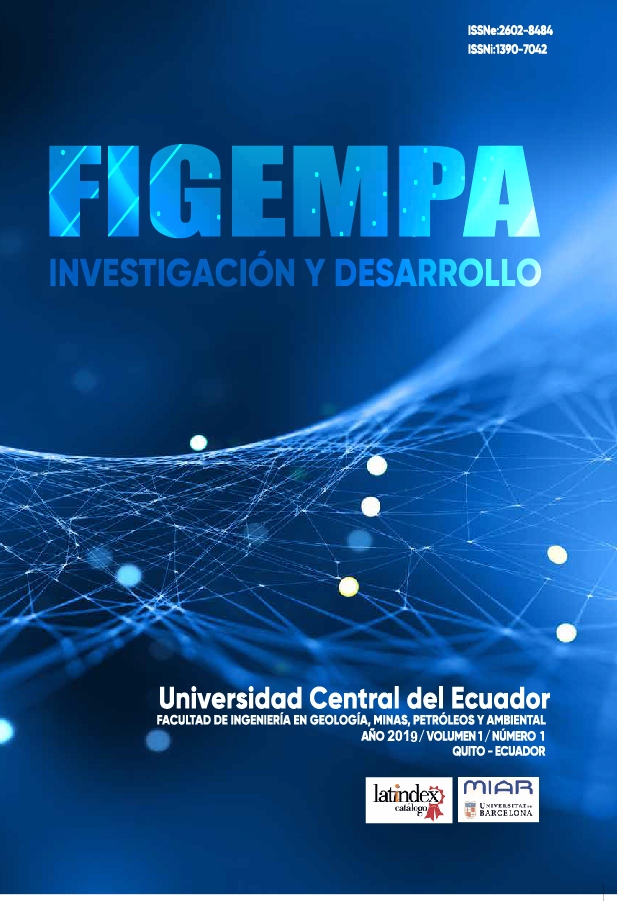Eficiencia de encapsulación de carotenoides extraídos de Capsicum annuum en nanopartículas de Zeina
Contenido principal del artículo
Resumen
Se sintetizaron nanopartículas de zeína para encapsular carotenoides y determinar la eficiencia de la encapsulación en condiciones experimentales controladas. Se extrajeron cuantitativamente los carotenoides de muestras preacondicionadas de Capsicum annuum, mediante agitación en frío con cloroformo. Los carotenoides totales, expresados como concentración de β−caroteno se cuantificaron por mediciones espectrofotométricas, que se relacionaron con unidades ASTA de color. Las nanopartículas de zeína se sintetizaron por el método de coacervación y se las caracterizó mediante mediciones de tamaño de partícula, polidispersión y potencial Z. El colorante fue encapsulado durante el proceso de síntesis. Utilizando un diseño factorial completo 23 al 95% de confianza, se determinó que las condiciones en las que se maximiza el porcentaje de inclusión del colorante en las nanopartículas de zeína, hasta un 88,94% fueron: concentración de zeína del 2%, temperatura de 20°C y pH 8.
Descargas
Métricas
Detalles del artículo

Esta obra está bajo una licencia internacional Creative Commons Atribución 4.0.
Citas
Aqua Hoy. (2017). Portal de información de acuacultura. [Online] Disponible en: https://www.aquahoy.com/156-uncategorised/14796-mercado-mundial-de-carotenoidesalcanzara-us13-billones-para-el-2017.
Ashok Patel, E.B. (2010). Sodium Caseinate Stabilized Zein Colloidal Particles. Journal OJ agricultura and food chemistry, 12497-503.
Association of Oficial Analitical Chemists, Inc. (1984). Official Methods of Analysis. Arlington, USA.
Beatus, Y., Raziel, A., Rosenberg, M. & Kopelman, I. (1985). Spray-drying microencapsulation of paprika oleoresin. Lebensmittel-Wissenchaft und Technologie, 28-34.
Favaro, C., Santana, A., Monterrey, E. & Trindade., M. (2010). The use of spray drying technology to reduce bitter taste of casein hydrolysate. Food Hydrocolloids, 336-40.
Fernández, J. (2009). Food hydrocolloids. Food hydrocolloids, 1, 427-32.
International Trade Center. (2016). Trade map estadísticas del comercio para el desarrollo internacional de las empresas. [Online] Disponible en: http://www.trademap.org/Country_SelProductCountry_TS
Martínez-Girón, J. & Ordóñez-Santos, E. (2015). Efecto del procesamiento térmico sobre el color superficial del pimentón rojo (Capsicum annuum), Variedad “Natal Y”. Biotecnología en el sector agropecuario y agroindustrial, 104-13.
Meléndez-Marínez, A., Vicario, I. & Heredia, F. (2004). Estabilidad de los pigmentos carotenoides en los alimentos. Archivos Latinoamericanos de Nutrición, 54(2), 1155-1158.
Meyers, S.P. (2000). Papel del carotenoide astaxantina en nutrición de especies acuáticas. In Memorias del IV Simposium Internacional de Nutrición Acuícola. México.
Palma Astudillo, M. (2013). Extracción de capsantina a partir de hojuelas de pimentón (Capsicum annuum l.) y estabilización por microencapsulación. Universidad de Chile Facultad de Ciencias Químicas y Farmacéuticas, 1-78.
Raula, J. & Eerikainen, H. (2004.) Influence of the solvent composition on the aerosol synthesis of pharmaceutical polymer nanoparticles. International journal Pharmaceutics, 13-21.
Robert, P., Carlsson, R., Romero, N. & Masson, L. (2003). Stability of spray-drying encapsulated carotenoid pigments from Rosa Mosqueta (Rosa rubiginosa) oleores. Journal of the American Oil Chemists Śociety, 1115-1120.
Rodríguez, M.E. (2004). Micro encapsulation by spray drying of multiple emulsions containing carotenoids. Journal of Food Science, 351-59.
Rosenberg, M. & Lee, S. (2004). Water-insoluble, whey protein-based microspheres prepared by an all aqueous process. Journal of Food Science, 50-58.
Shukla, R. & Cheryan, M. (2001). Zein: the industrial protein from corn. Ind. Crops Prod., 171-192.
Singh, R. & Lillard, J. (2009). Nanoparticle-based targeted drug delivery. Experimental and Molecular Pathology, 215-23.
Szente Lajos, K. (1998). Stabilization and Solubilization of Lipophilic Natural Colorants with Cyclodextrin. Journal of Inclusion Phenomena and Molecular Recognition in Chemistry Netherlands.
Vega, R. (2016). Curso de diseño experimental y análisis estadístico. Quito: Escuela Politécnica Nacional.
Wang, I. (2008). Food biophysics. Food biophysics, 3, 174-81.
Xu, Y.X. & Hanna, M.A. (2006). Electrospray encapsulation of water-soluble protein with polylactide e effects of formulations on morphology, encapsulation efficiency and release profile of particles. International Journal of Pharmaceutics, 30-36.
Zhong, H. (2009). J Food process pres. J food process pre, 255-70.

